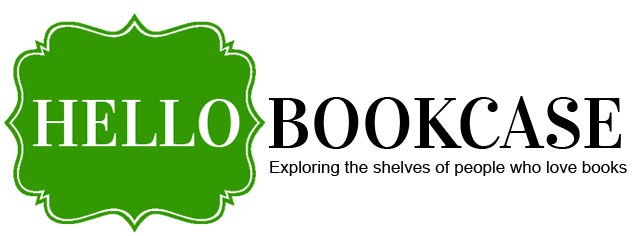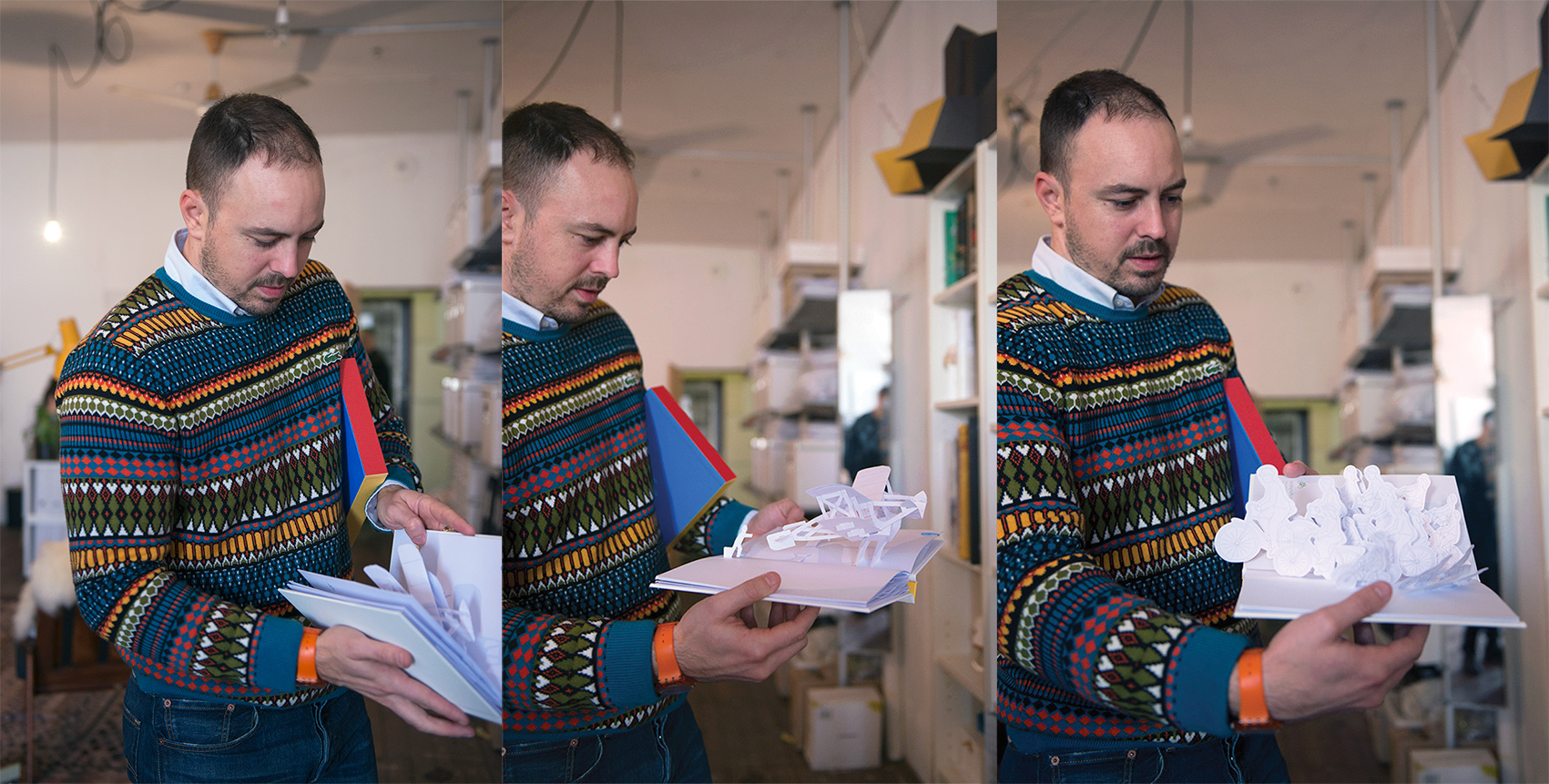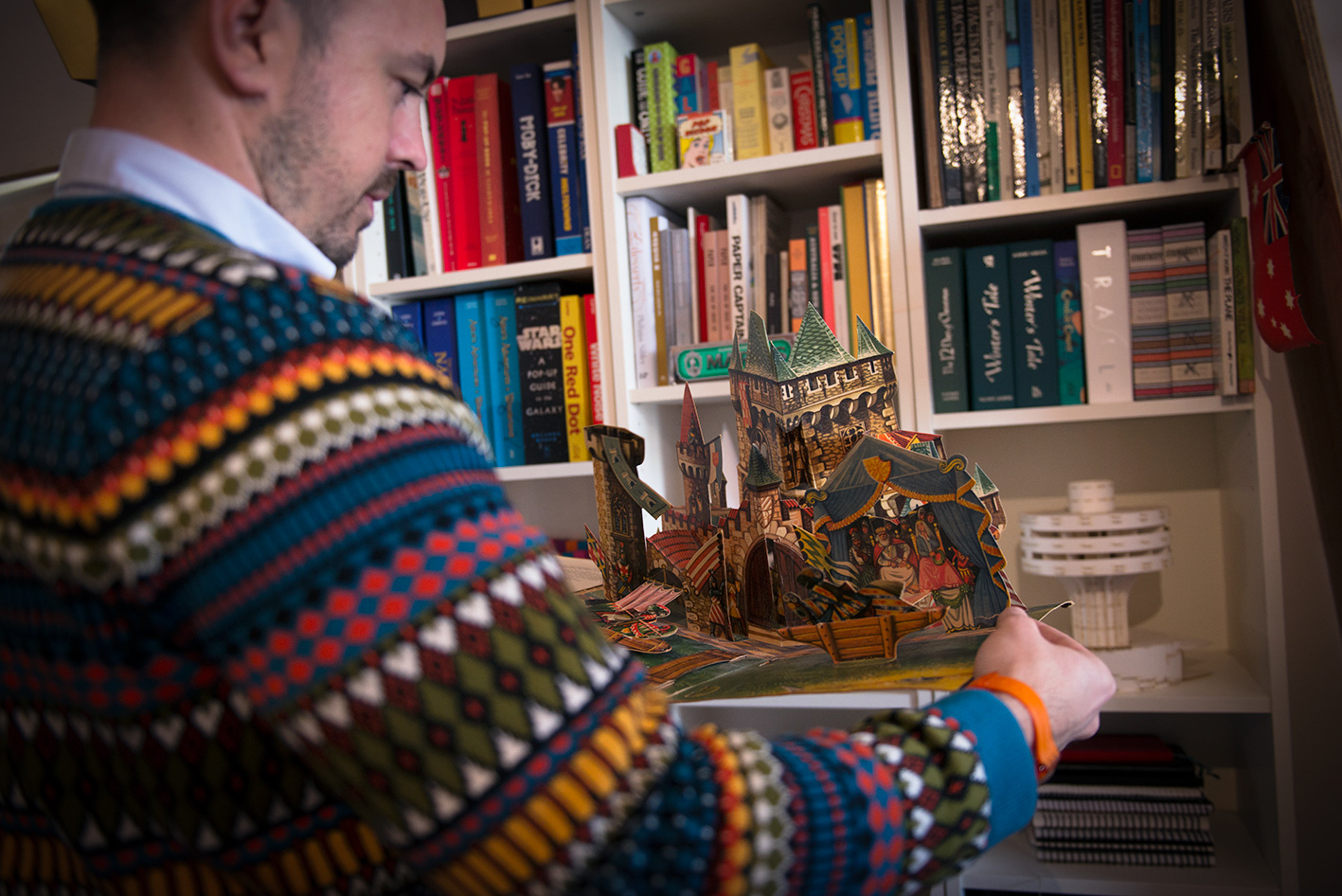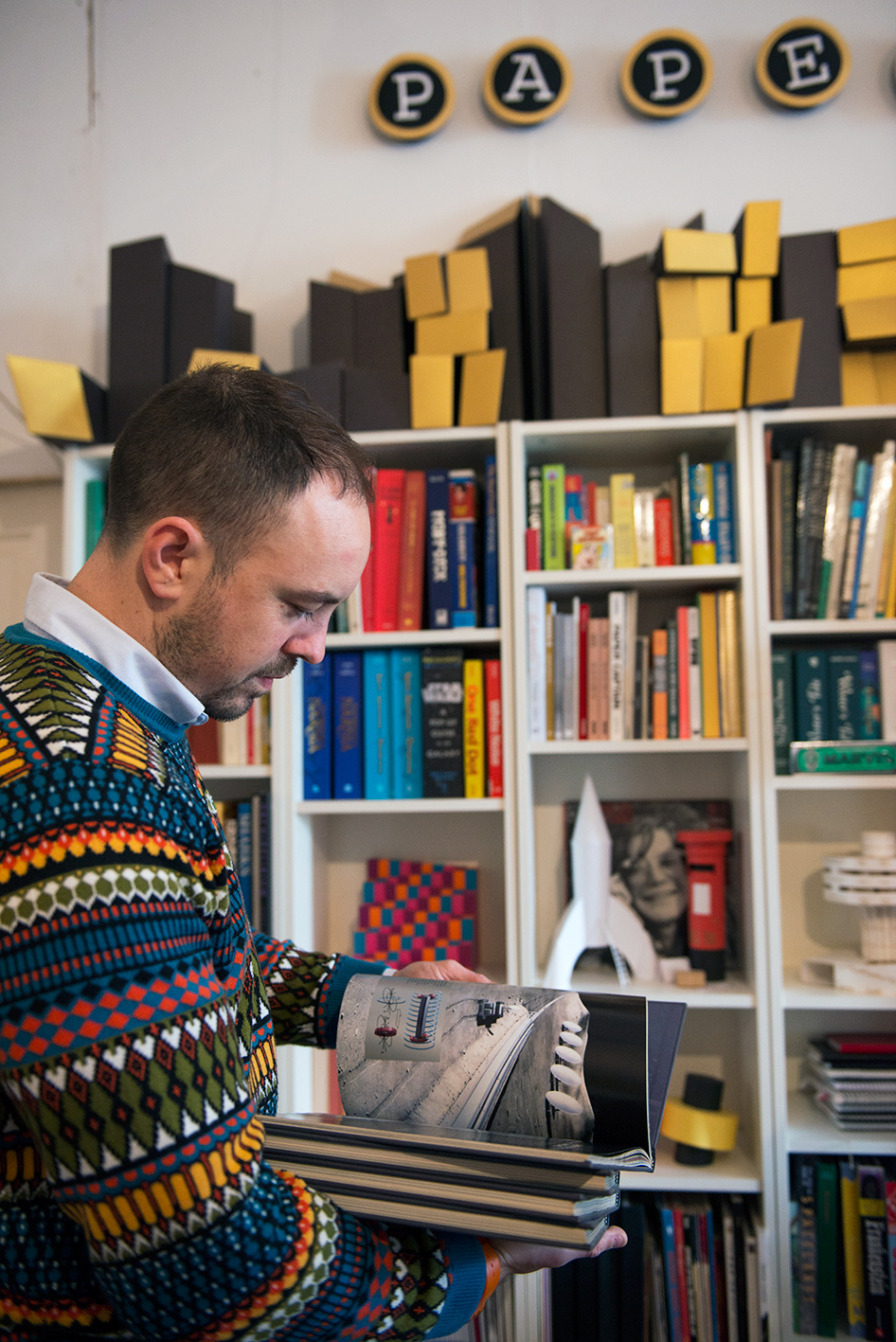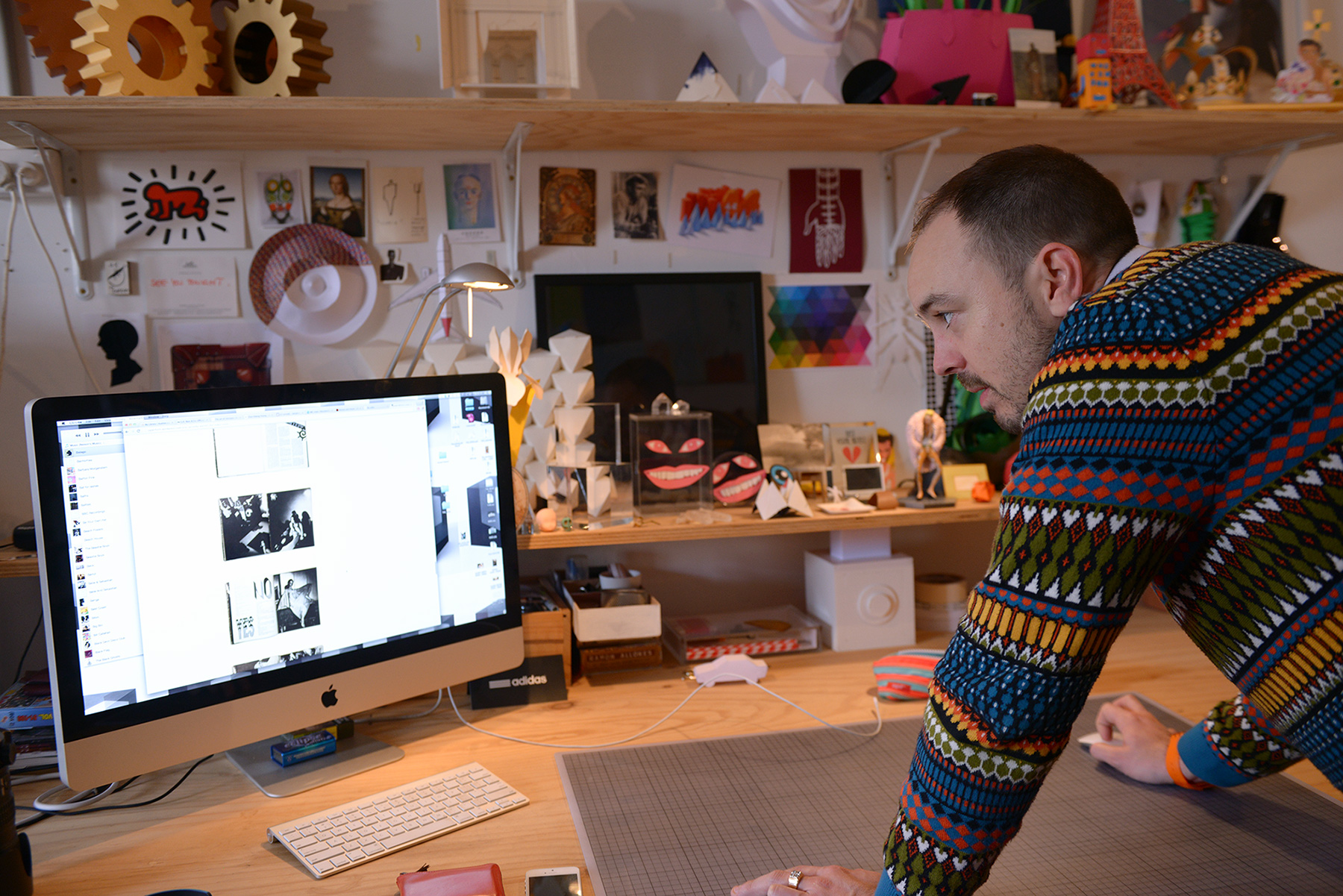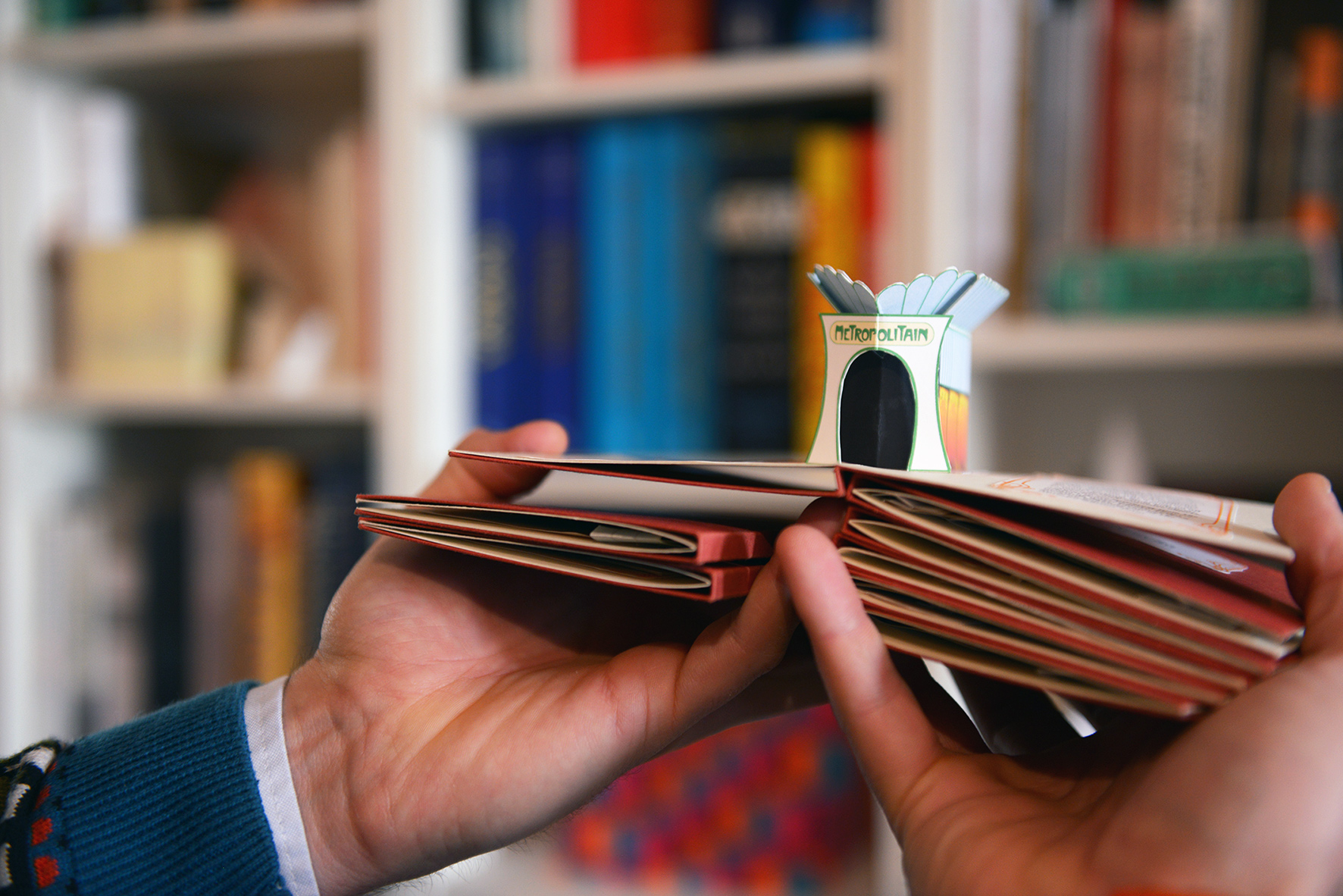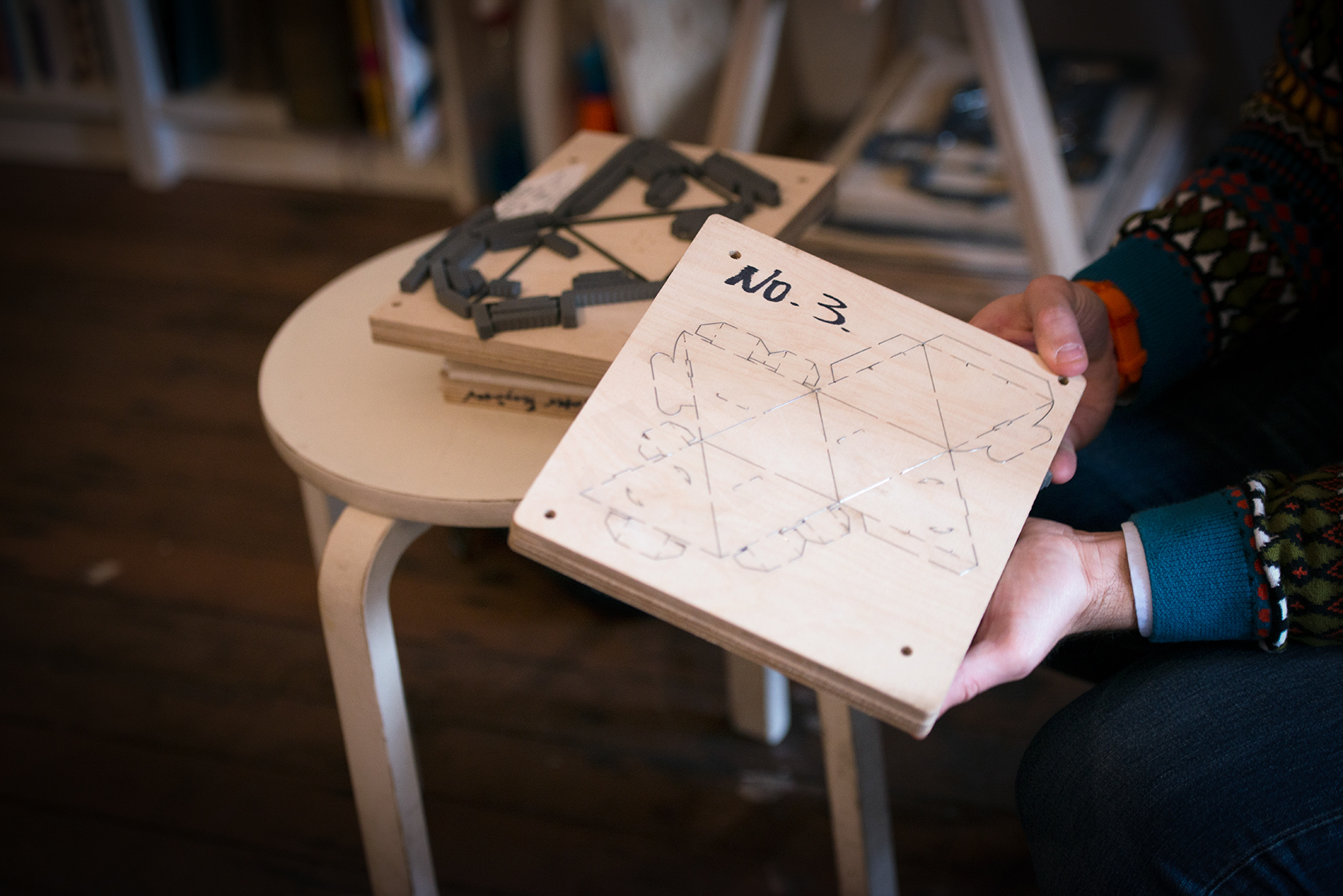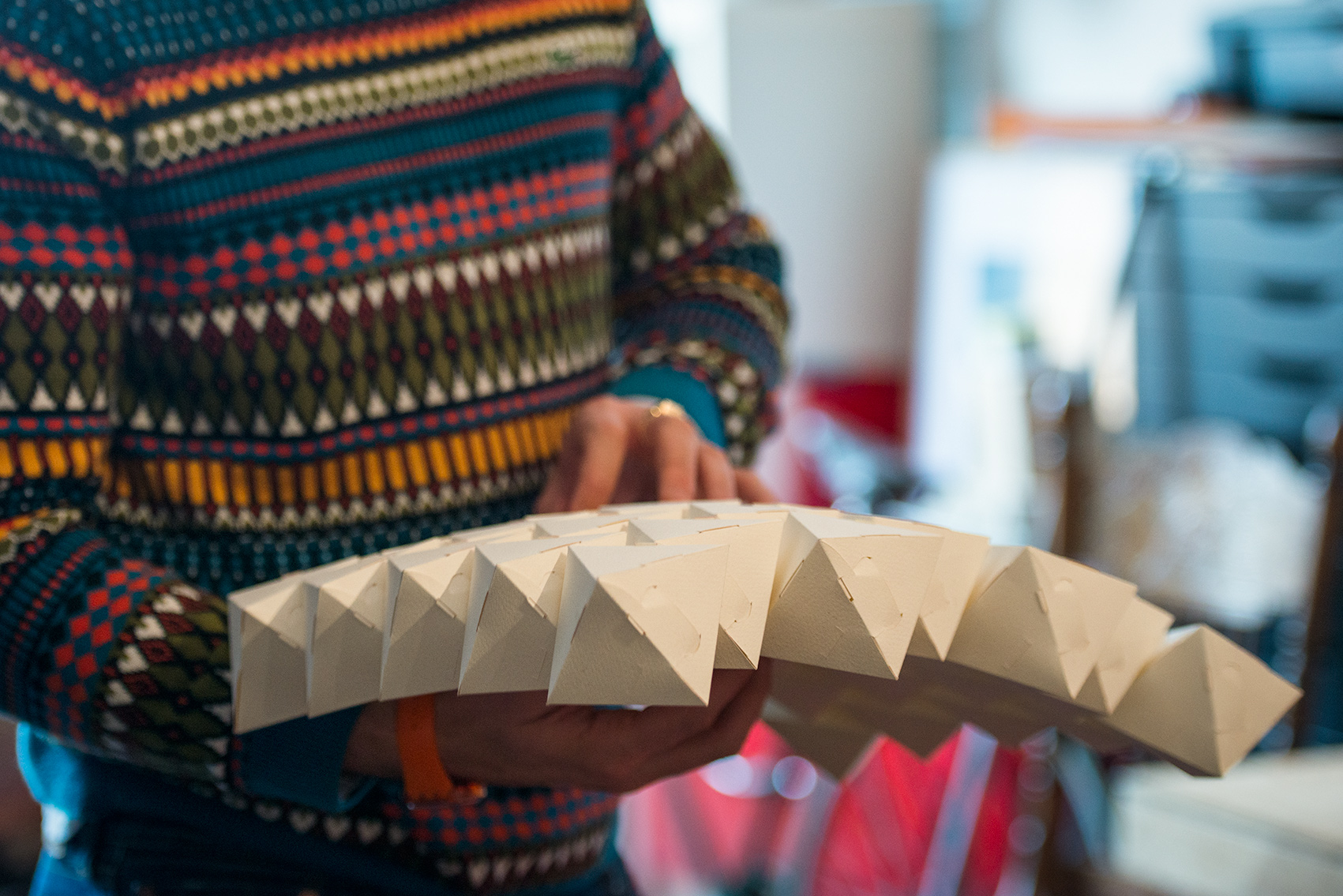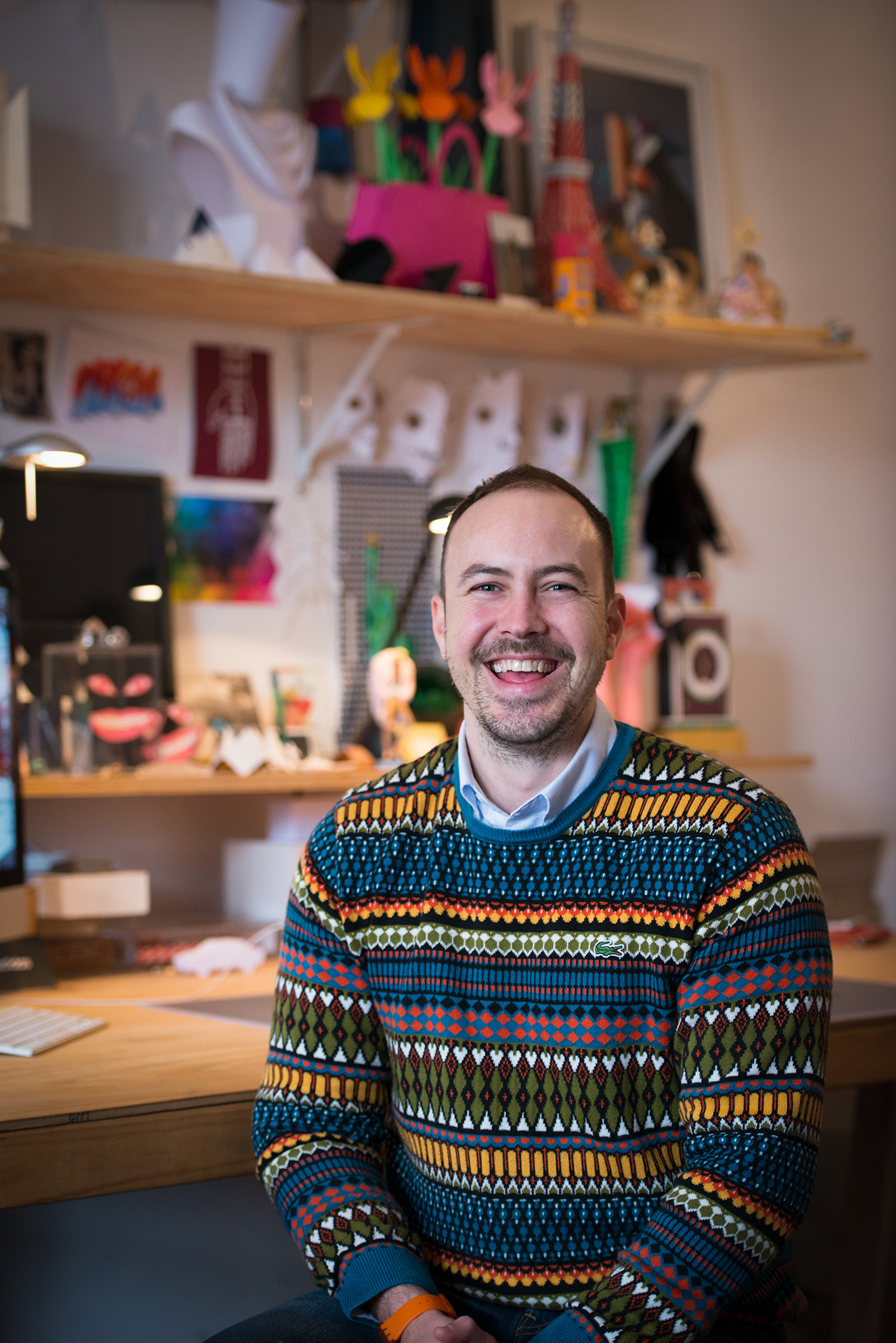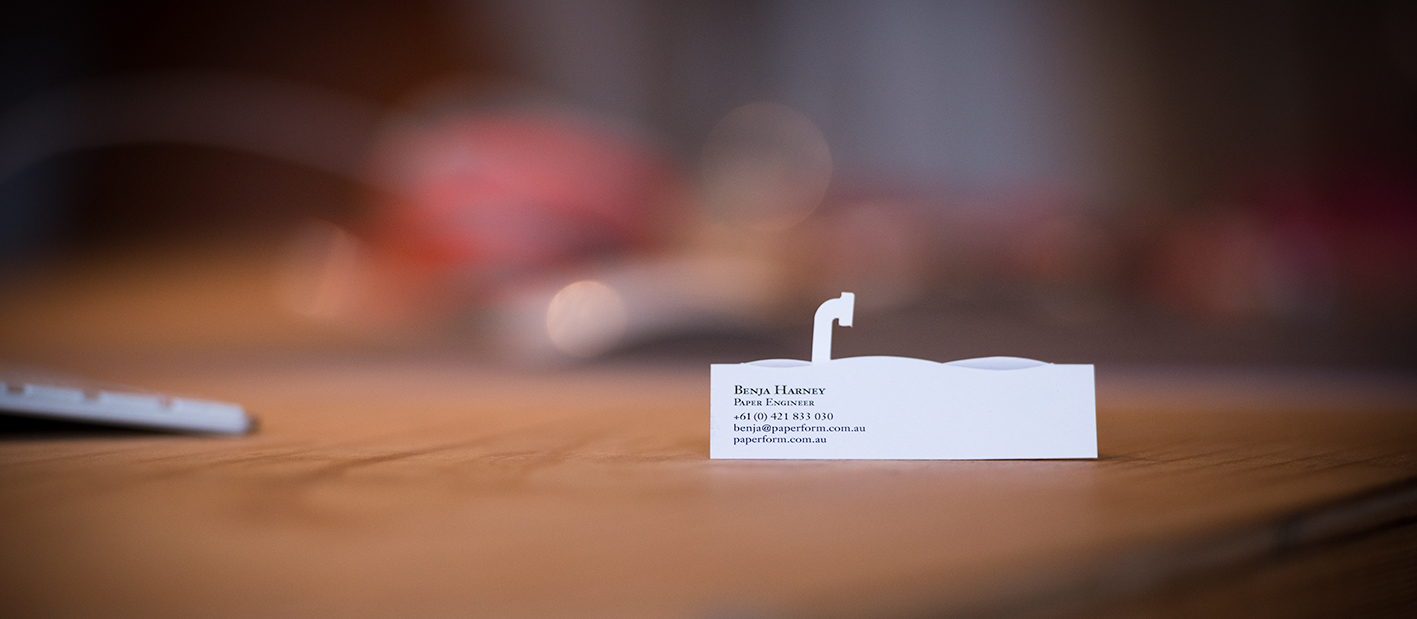Interview: Benja Harney
Written by Hello Bookcase, Posted in Interviews
Opening any book within the bookcase of paper engineer Benja Harney is an adventure as worlds pop up and amaze. His passion for paper is reflected in his impressive book collection. Rarities and oddities sit on the shelves along side his intricate paper creations as companions. Benja’s collaborations have included Kylie Minogue, Google and Lego and on our visit he was creating a beautiful portrait series for the National Breast Cancer Foundation.
The majority of the books that I have here in my studio are pop-ups and I always refer to them for inspiration. I have collected a lot over the years – my family and friends also pick them up for me when they come across them. I also still have a few of my childhood pop-up books here. An early one we had and loved was the Space Shuttle Book. I have a copy of The Castle Tournament by Voitech Kubasta, which was my mums book from her childhood – we loved playing with it. My mother, Susan Harney was a children’s book author and published books for the Bunyip series, so we had a lot of lot of books growing up.
We made a lot of models as kids – my brother and I lived our lives around books from Cornstalk which included Advanced Paper Aircraft Construction. My favourite book was Make your own Pop-ups. Another of my favourite books when I was younger was The Favershams by Roy Gerrad – They characters are quite posh – I love the drawings, they fascinated me.
I love coming across anything that is old and rare. I wanted to own this one for years, The Royal Family Pop Up Book – I bought it in Tasmania. It’s funny and silly. Sometimes I have to go in and restore older books I find but this one is in good condition.
I just found some great books that were getting thrown out on the street the other week. They are old visual reference books – Voyages through the universe and Galaxies. They’re very outdated but they have some interesting imagery in there.
My most extravagant book purchase is not here – it’s by my bedside at home. I bought an Andy Warhol pop-up book from LimArt Books – it is in the back streets of Ebisu in Tokyo. They deal in secondhand books and they love it when I come in – it is always full of amazing books and rare editions.When I first came across the book and I couldn’t afford it and I came back a year later and it was still there – it was meant to be. I don’t keep it here just in case the sprinklers go off but I documented the book on my website. I thought it was important to document because it is so rare.
I discovered LimArt Books from Tokyo by Tokyo – by Claska, it’s a where to guide by Tokyoites. I take it with me everytime I go – I always find something new when I am there.
Whenever I travel I always buy pop-up books – I was in Sweden recently and picked up some good ones – they showed the power of pop-up and how it can be very basic and still quite effective. I think it’s interesting to have books in different languages. I recently bought in France a pop up book about Australia. It’s quite beautifully done. I tend to go to secondhand bookstores when I am overseas.
My most treasured book is Paper Sculpture by Tadeusx Lipsnki. It’s just very beautiful. I found a lot of inspiration in this book when I first started.
Another favourite is by German paper designer, Thomas Demand , given to me from my brother. He does these incredible installations. It’s all about the image – he creates scenes and then destroys the sets afterwards. I actually got to meet him at the Art Gallery of NSW where he giving a talk and he signed my copy. He is one of the original paper gurus.
Making Paper Models by Walter F Alton was also a gift from a friend. Its quite retro. There are some lovely projects and it is good to see the old approach of working with paper.
This is my first project – little pop-up books on Art Nouveau. It’s really simple but that’s where it all started. I still have the journals for all my original designs from design college. I do go back to them – this one in particular from my 3D class. It has old ideas that I like to go back to – they are still important to me. I started working in paper in 2004 when I was at design college and it grew from there.
My bookshelf is also about collating work that I am in – magazines and books. I did a pop-up book for Google earlier this year. It can take me weeks to produce a book and can require up to 20 different models to get it right – this one took months to complete. These are the mock up for Kylie’s book – the original is on show in South Korea for the World Pop-Up Exhibition at the Seoul Arts Centre. It was a book based around her CD.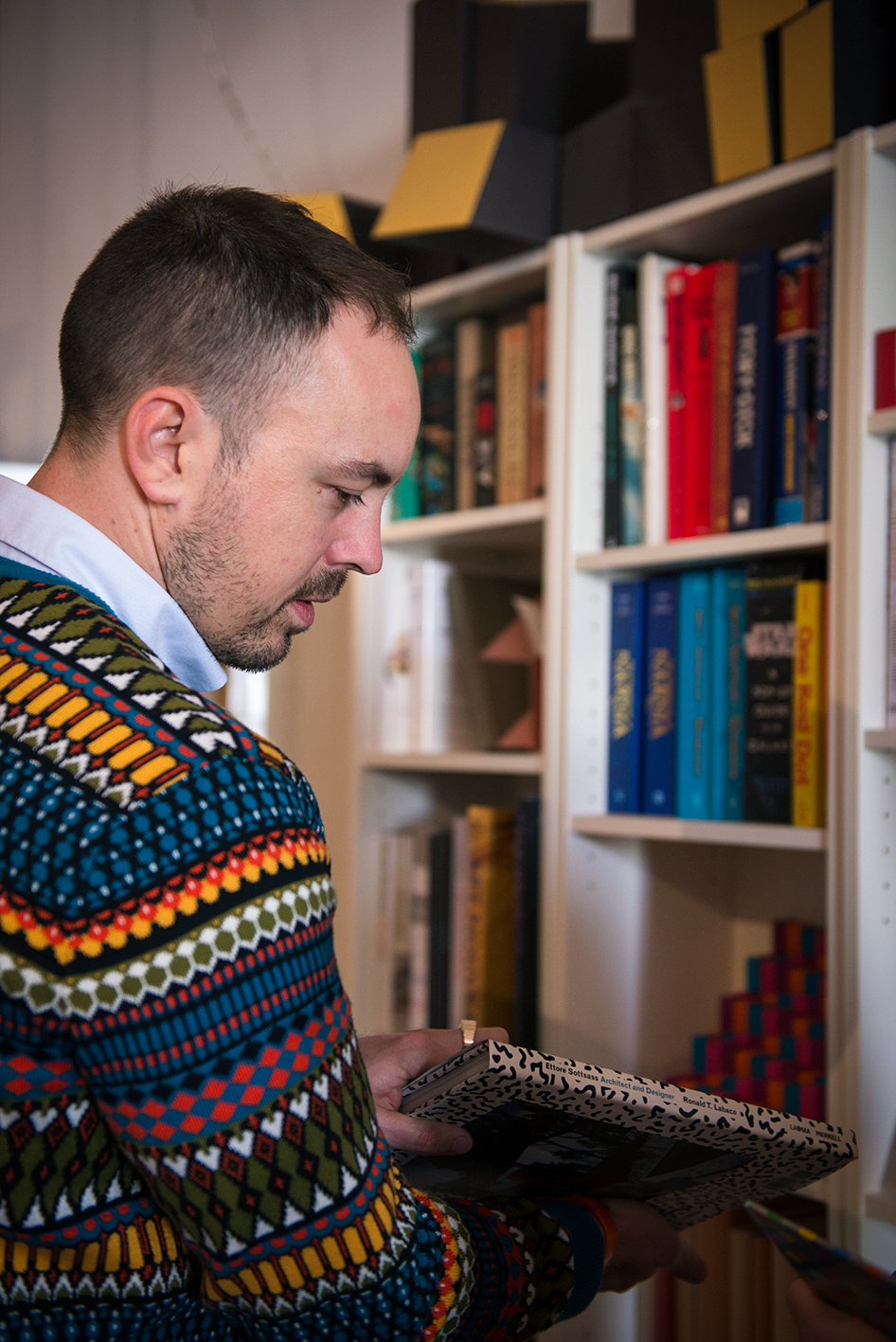
Memphis has been my favourite design style for many years and Ettore Sottsass is its founding father. This book, Architect and Designer is a pictorial summary of some of his more iconic work including drawings, sculpture, furniture and architecture.
I recently reread the book by Japanese designer Kenya Hara – White. It is basically an essay on the meaning and power of white when used in visual communication. It’s a lovely little book that I come back to from time to time. I love the Japanese approach to colour and their cultural depth seems to allow a more considered application and appreciation beyond the surface.
In Praise of Shadows by Junichiro Tanizaki is also interesting to see how they appreciate shadows and the darkness in every day life and design. As Westerners we are quite fixated with lightness and brightness and in Japan – there is the idea of dark.
I have kept these blocks – they were used to create woven paper tapestries using no glue for my solo exhibition last year – New Platonic . It is an interesting process – the knife lines are supplied in vector form to the knife maker. A machine takes these lines and then routes out the design into a piece of thick plywood. Another machine then “prints” out sections of metal ribbon at the precise length for each cut. This metal ribbon is razor sharp along one edge. If a score or fold is required in the design, the machine folds the metal in half so an indent is made in the paper rather than a cut. Once the pieces have been printed out they are hammered into the wood with copper chisels that won’t damage the harder cutting metal. After all the sections have been hammered in, small pieces of foam are stuck to the wood around the design to protect the paper in the punching process. The finished knife is placed in the printing press and as the paper slides over it, the press pushed down onto the knife and punches out the final design.
They are nice to have around.
About Benja
Benja Harney is a self-taught paper engineer based in Sydney. Through his passion for paper he has been dedicated to raising the profile of this medium both here in Australia and abroad. Over the past 8 years he has applied his skills across a wide range of creative fields. Notable recent collaborations include Google, Hermès, Kylie Minogue, Romance Was Born, Lego, Artbank and The QVB. Last year he was named 2012 Best Visual Artist at the FBI Sydney Music, Art and Culture Awards and his work is currently on show in South Korea as part of the World Pop-Up Exhibition at the Seoul Arts Centre.
Leigh Russell and Kathy Luu chatted with Benja on the 24 June 2013. Images by Kathy Luu
© Hello Bookcase 2013. Unauthorized use and/or duplication of this material without express and written permission from this blog’s author and/or owner is strictly prohibited.
